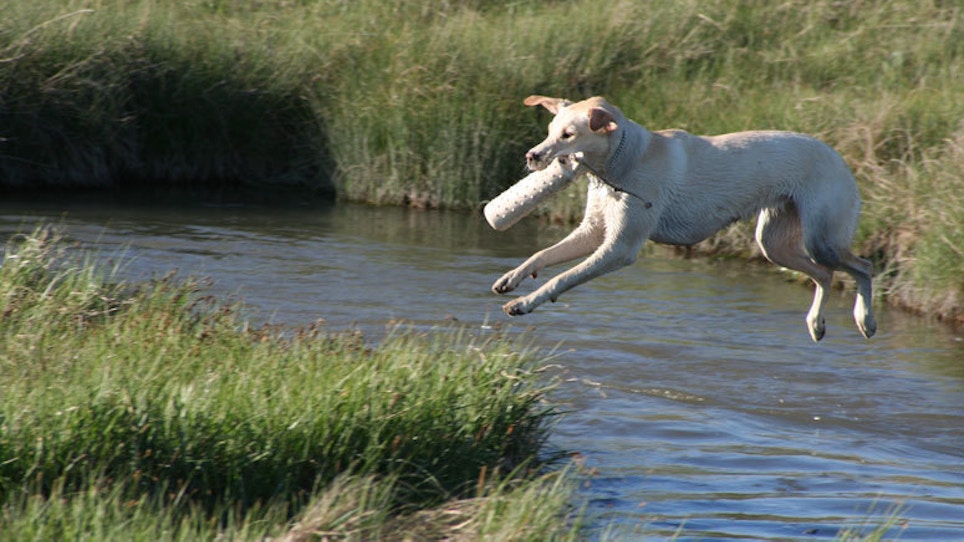Let’s face it: Many dogs screw up their first few hunts. Although you might have put in an entire summer of training, a young dog’s first days afield might be more exciting and confusing than he can handle. More than ever, your pup needs a steady hand to guide him to do the right thing — but what exactly is that?
It’s important to understand that making a successful transition to the field starts long before opening day. I spoke with Cal Horner of Bozeman, Montana, a retriever trainer with three decades of experience under his belt. One of the best determiners of how well any dog makes the transition from field to hunt is simply how long he’s been trained prior to the transition.
“What I’ve found is this,” he told me. “People really vary a lot in how much time they spend on their dogs. Some people put in a bare minimum. Others might work with the dog for four or five months. I’d say one of the most important things is to get with the trainer and learn how to handle your dog, if you’ve had your dog professionally trained. If you’ve done the job yourself, you need to be consistent with what the dog has been trained to do. Furthermore, all that training needs to be in line with the way that dog is going to be hunted.”
This last is a good point many inexperienced trainers miss. Everyone hunts differently; we all have a particular style or method we use, whether it’s sending a dog on a line, delivering hand signals, or giving praise. If those change when the hunting season begins, the dog will be confused, and if he becomes confused, there’s a good chance he’ll ignore your commands.
Horner stresses that you and your dog need to work together. That can be harder than it sounds.
“People have to understand that the dog and themselves are a team,” he says. “The more and closer you can work with your dog and communicate with him, the better off you’re going to be. I have people who…it’s almost like a chore for them to come out so I can show them what their dog can do. It really makes me wonder how much they’re getting out of that dog.”
Effective teamwork arises from understanding your dog at a very deep level, and that only comes after time spent on the ground, either practicing your handling skills after he’s been professionally trained, or training your dog yourself. You need to know, at least most of the time, how your dog thinks and be able to understand the conversation he’s having with you via his body language. All dogs telegraph their intentions with body language; if you can’t read them, how are you going to react to them in an appropriate way? Knowing that your dog is about to break, for instance, can go a long ways toward stopping him from doing just that on an actual hunt. Noticing that something has caught his attention will let you anticipate his bolting if he’s been ordered to stay at heel.
Another point: train with the birds your dog will be hunting. This is a practice all pro trainers employ, but very few amateur trainers do, often because they don’t have access to birds. But getting your dog to flush or retrieve the same species of bird it will be hunting can save a lot of time transitioning to that bird in the field.
“It doesn’t take much,” Horner says. “First time you shoot a pheasant, you bring your dog over and make sure he picks it up. Do that six or eight times and he’ll know what he’s hunting. And that’s true with any bird. You might hunt chukars or something else the dog has never seen. That’s what game farms are for. They’ll plant some birds for you so the dog can see what’s going on.”
In the dog-training vernacular, there’s a term called generalizing. It means exposing your dog to lots of different situations to, in effect, accustom him to handling distractions. But Horner doesn’t necessarily see it that way.
“It’s not so much distractions as it is training that specific thing, whatever it is,” he says. “A retriever has to be taught how to sit, and he has to stay sitting for a long time. That’s not so much distractions as it is the real world. You’ve got guns out there, you’ve got people out there, you’ve got birds out there and the dog needs that experience.”
To give a dog that kind of experience — before the season opens — takes time, which brings us back to the first point Horner made: spend enough time with your dog.
“It’s hard to believe sometimes how long it takes to train a dog to do something, and it might only be two or three things,” he says. “He needs to heel, sit and retrieve, and that sounds really simple. But when you go out there in the real world, there’s all kinds of stuff going on, you know? It takes time to get them used to all that.”
Finally, when opening day does roll around, do yourself and your dog a big favor: Devote the day to him.
“I would suggest that you hunt solo,” Horner says. “Don’t go out with other dogs, don’t go out with other hunters. If you do, make sure it’s no more than one; somebody who knows his way around dogs and isn’t going to do the wrong thing.”
Then follow your own rules and stick to the program the dogs knows. Insist, as Horner does, that he obey your commands. He’ll be less confused and better mannered if he understands the parameters right from the start. And you’ll keep the hair you would have pulled out had you done it any other way.






